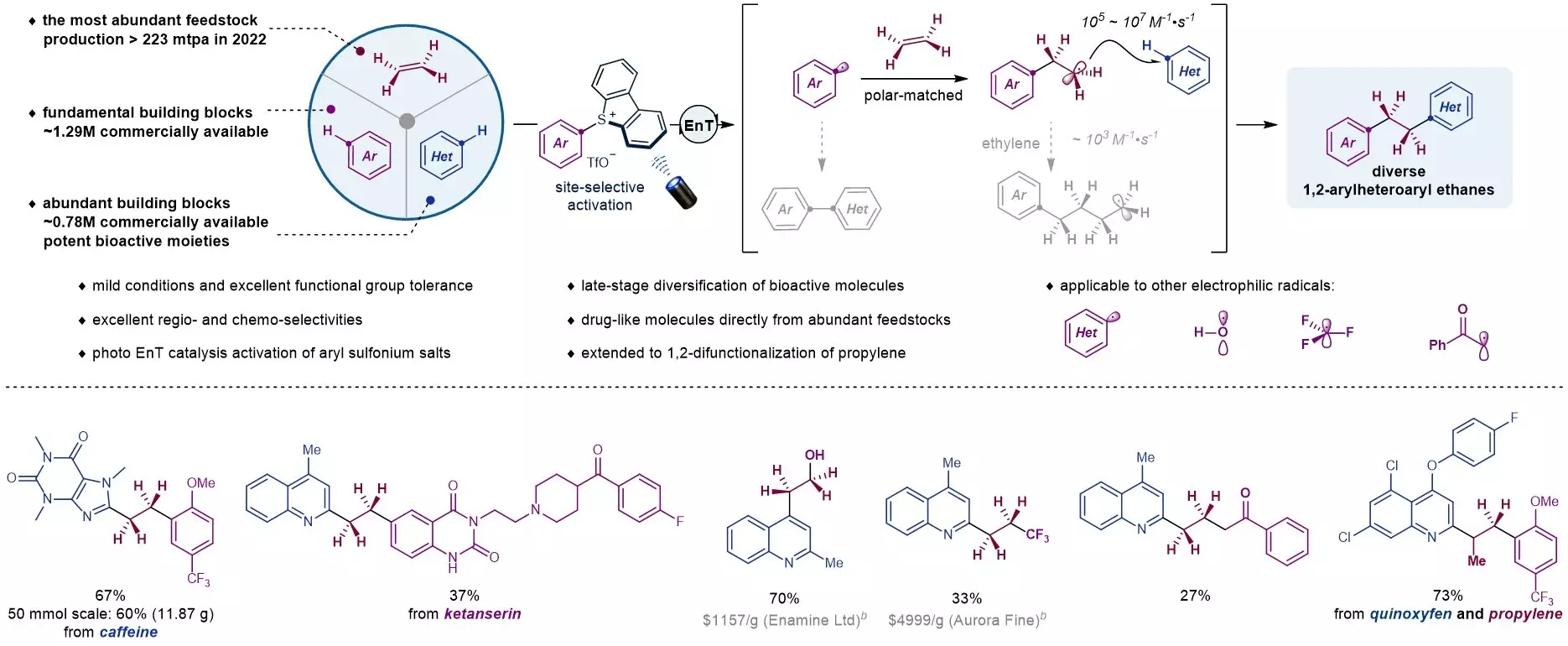

Chemists at the National University of Singapore (NUS) have made a groundbreaking discovery in the field of drug discovery and pharmaceutical development. By utilizing a modular approach, they have successfully created 1,2-arylheteroaryl ethanes, which are crucial compounds for advancing pharmaceuticals. This innovative method allows for the strategic assembly of basic feedstock chemicals such as ethylene, arenes, and heteroarenes to achieve molecular diversity and tailor molecular structures specifically for drug development purposes.
The traditional methods of synthesizing 1,2-arylheteroaryl ethanes have long been plagued with challenges such as reliance on pre-functionalized synthons, lengthy synthetic routes, limited substrate compatibility, and demanding reaction conditions. However, the team at NUS led by Associate Professor Wu Jie has overcome these obstacles by introducing a new approach that leverages light to initiate the generation of aryl radicals from aryl sulfonium salts. These reactive intermediates then react with ethylene and heteroarenes molecules to form the desired chemical compound, paving the way for more efficient and streamlined synthesis processes.
Ethylene, a fundamental component of the global chemical industry, plays a key role as a primary feedstock in this innovative approach. With a production volume exceeding 223 million tons in 2022, ethylene serves as a crucial building block for the synthesis of 1,2-arylheteroaryl ethanes. Additionally, arenes and heteroarenes molecules, which are widely available, are used as sources of aryl and heteroaryl chemical groups, further enhancing the modularity of the synthesis process.
The development of this modular synthesis approach has significant implications for the drug discovery and petrochemical industries. By enabling the modular and sustainable production of diverse molecular scaffolds, this method has the potential to revolutionize the way new drugs are developed and synthesized. The utilization of gaseous alkenes and the coupling of multiple fundamental components represent a major advancement in the field of organic synthesis, offering a more efficient and environmentally friendly alternative to traditional methods.
To add practicality to this synthetic protocol, a simple in-house built circulation flow system has been employed by the research team at NUS. This innovation demonstrates the feasibility and scalability of this approach, making it a promising tool for future drug development endeavors. As Associate Professor Wu Jie states, “Our long-standing interest in synthesizing valuable fine chemicals from fundamental feedstock chemicals, particularly natural gases, has led us to develop innovative, on-demand assembly strategies.” The future of drug discovery and pharmaceutical development looks brighter than ever with the introduction of this innovative modular synthesis approach.
A groundbreaking expedition led by an international research team, featuring esteemed scientists from the University…
The pursuit of coherent control over wave transport and localization stands as a monumental challenge…
In recent astronomical explorations, researchers have unearthed a striking phenomenon emanating from a distant corner…
The quest for sustainable practices within the chemical industry is more critical than ever. Researchers…
In the complex interplay of human health, the relationship between the gut and the brain…
The relentless drive for sustainable energy solutions has fueled remarkable advancements in solar technology, with…
This website uses cookies.